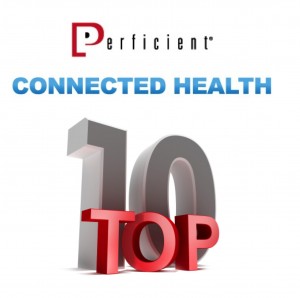 Today’s entry in the 2014 Connected trend Health countdown takes us far away from home:
Today’s entry in the 2014 Connected trend Health countdown takes us far away from home:
Trend #7: Care That Knows No Bounds
It wasn’t so long ago when the general consensus amongst healthcare leaders was ripe with uncertainty regarding the returns to be had from telehealth and remote patient monitoring investments. It’s only a year or so later and these same telehealth programs are now becoming well established at health systems across the country (and around the world). It seems that the very concerns holding telehealth back in the not so distant past are the same concepts that are driving it forward today. As mentioned by Gienna Shaw of Fierce Healthcare, telehealth is saving money and extending the mission of better health.
Life Saving Decisions Made from a Distance
Children’s hospitals across the country have been the fastest adopters of mobile health technology. Children’s of Philadelphia and Boston Children’s Hospital are considered thought leaders in this area. However, it was a west coast provider that recently got my attention. In mid-November, I happened upon an article in the Business Journal about how the telemedicine program at Oregon Health & Science University (OHSU) saved a baby’s life. 7 month old MaLea Fox had a very high fever. Blood work revealed that she had a virus, but after returning home MaLea’s mother was unable to wake her after four hours. The on duty physician at Columbia Memorial Hospital in Astoria was able to call for a telemedicine consultation with OHSU’s Dr. Jennifer Needle, a pediatric intensivist. She exambined the child using a two-way communication system with a “robot-like” device. Dr. Needle was able to see MaLea’s symptoms, which made her look like a burn victim. MaLea was diagnosed with Memingococcemia, which is a life threatening bacterial infection. Needle advised having a breathing tube inserted before sending her to Portland by helicopter. Weather made the transport a challenge, which made intubation a lifesaver in this case. MaLea spent 111 days in Portland and had her leg amputated above the knee. She is now doing much better and has no memory of the trauma.
Online Medicine Means Big Business
One area of strong growth in telehealth is the area of online medicine, which is more popularly dubbed “virtual visits”. According to the Pew Internet and American Life Project, 88% of US adults with Internet access research health information online and 60% say the Internet info influenced a decision about how to manage a health condition. Going online is no longer a one-way stream of information from computer to patient. We are now in the era of web 2.0, which is empowered by social networking. Patients go online to find meaningful engagement with other epatients and, becoming more and more common, with their providers via secured access patient portals.
The results have shown promising enough to elicit private investment. Time Warner Business Class recently announced it was venturing into the world of virtual medicine through a partnership with the Cleveland Clinic. The program is part of Time Warner Cable’s Home Health Monitoring network that was designed to connect healthcare providers to patients in their homes. It will provide for secure, encrypted, two-way video conferencing between patients and Cleveland Clinic providers.
We now live in a world where the local hospital is competing with national leaders. However, the wonder that is social technology has historically favored David over Goliath. I’m very interested in seeing where this trend leads us throughout the coming year.
- Connected Health Trend #10: M&A Meets Consumer Engagement
- Connected Health Trend #9: The Connected Enterprise
- Connected Health Trend #8: Sharing Notes with Patients
- Connected Health Trend #7: Care Knows No Bounds
- Connected Health Trend #6: Evolution of Social Media
- Connected Health Trend #5: The Meaningful Use Timeline
- Connected Health Trend #4: Reaching the Mobile 91%
- Connected Health Trend #3: Moving Beyond “Sick Care”
